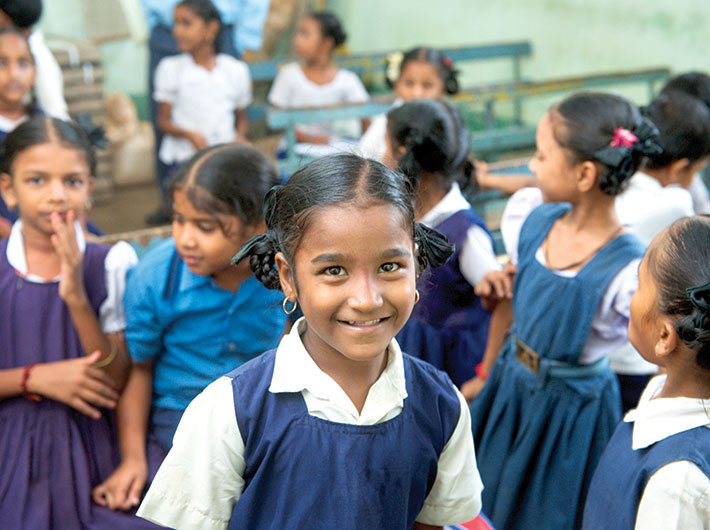As the Indian concept of welfare transforms into empowerment, India is transitioning from women’s development to women-led development, highlights the Economic Survey 2023-2024.
Tabled in the Parliament on Monday by finance minister Nirmala Sitharaman, the Economic Survey 2023-2024 focuses on steering the country through compacts and consensus in the times of geo-political and global challenges. It sheds light on the expanding Indian Economy demonstrating resilience. The Economic Survey has noted that the Indian economy has consolidated its post-Covid recovery and is on a strong and stable footing.
The Survey points out that to respond to the clarion call to Nari Shakti, the government has made various legislative interventions and enabling provisions to ensure women’s participation in various professions.
The Survey notes that 218.8 per cent increase has been seen in the budget for schemes for the welfare and empowerment of women. It has grown from Rs 97,134 crore (BE) in FY14 to Rs 3.10 lakh crore in FY25 and also shows a 38.7 per cent rise in the Gender Budget Statement (GBS) as compared to FY24 BE. The share of the Gender Budget in the total Union Budget has increased to 6.5 per cent in FY25, the highest since the introduction of GBS in FY06.
The Survey has stressed that women-led development begins with ensuring the health and education of the girl child. The sex ratio at birth (SRB) at the national level has improved from 918 (2014-15) to 930 (2023-24, provisional), and the maternal mortality rate has declined from 130/lakh live births in 2014-16 to 97/lakh live births in 2018-20. “Beti Bachao, Beti Padhao” along with Sukanya Samriddhi Yojana has been instrumental in sensitizing collective consciousness towards cherishing, educating, and saving for the girl child, the Economic Survey observes.
The Survey points out that over the last decade, the prevalence of institutional delivery has increased from 78.9 per cent in 2015-16 to 88.6 per cent in 2019-21 due to programme to incentivize institutional delivery through Janani Shishu Suraksha Karyakram and aided by PM Matru Vandana Yojana, India’s largest conditional cash transfer programme. The programmes have had positive side-effects of utilization of public-health services and increasing the interval between births.
The government initiatives to empower women have focused on enablers that improve upon women’s conditions as well as tackle gender-specific disadvantages that inhibit their development. Tackling the gender—specific disadvantages, the construction of toilets under ‘Swachh Bharat Mission’, the provision of clean cooking gas connections under ‘Ujjawala Yojana’ and the provision of tap drinking water connections under ‘Jal Jeevan Mission’ are identified to have transformed the lives of women by reducing the drudgery and care burden. These initiatives, besides addressing concerns of safety and dignity, have freed up time and energy for productive work such as participation in women’s collectives through National Rural Livelihood Mission (NRLM).
Mission Saksham Anganwadi & Poshan 2.0 programmes, have been enlisted as enabling initiatives with the underlying principle that women’s health forms the bedrock of societal health. The programmes have shifted the focus from calorific sufficiency alone to improved health, wellness, and immunity through micronutrient sufficiency. Women’s education, a key enabler, is at the centre of women empowerment, stresses the Economic Survey. “With implementation of the Sarva Shiksha Abhiyan and the Right to Education, gender parity has been achieved at all levels in terms of enrolement in schools. In higher education, the female GER has been greater than male GER for five consecutive years”, the Survey has highlights.
Acknowledging that the skilling schemes have put a dedicated emphasis on covering women, the Survey observes that the participation of women among those trained has increased from 42.7 per cent in FY16 to 52.3 per cent in FY24 under Pradhan Mantri Kaushal Vikas Yojana (PMKVY). Under the Jan Shikshan Sansthan (JSS) Scheme, women constitute about 82 per cent of the total beneficiaries. In the long-term ecosystem, i.e., in ITIs and National Skill Training Institutes (NSTIs), the participation of women has gone up from 9.8 per cent in FY16 to 13.3 per cent in FY24. Under National Apprenticeship Promotion Scheme (NAPS), the participation of women has increased from 7.7 per cent in FY17 to 20.8 per cent in FY24.
‘Women in Science and Engineering-KIRAN (WISE KIRAN)’ programme that strives to boost the involvement of women in STEM fields has benefitted nearly 1962 women scientists between 2018 and 2023. The Vigyan Jyoti programme, initiated in 2020, that aims to address the underrepresentation of girls in various science and technology courses from 9th to 12th grades, has seen an enrollment of around 21,600 female students of Class IX-XII from 250 districts as of December 2023.
